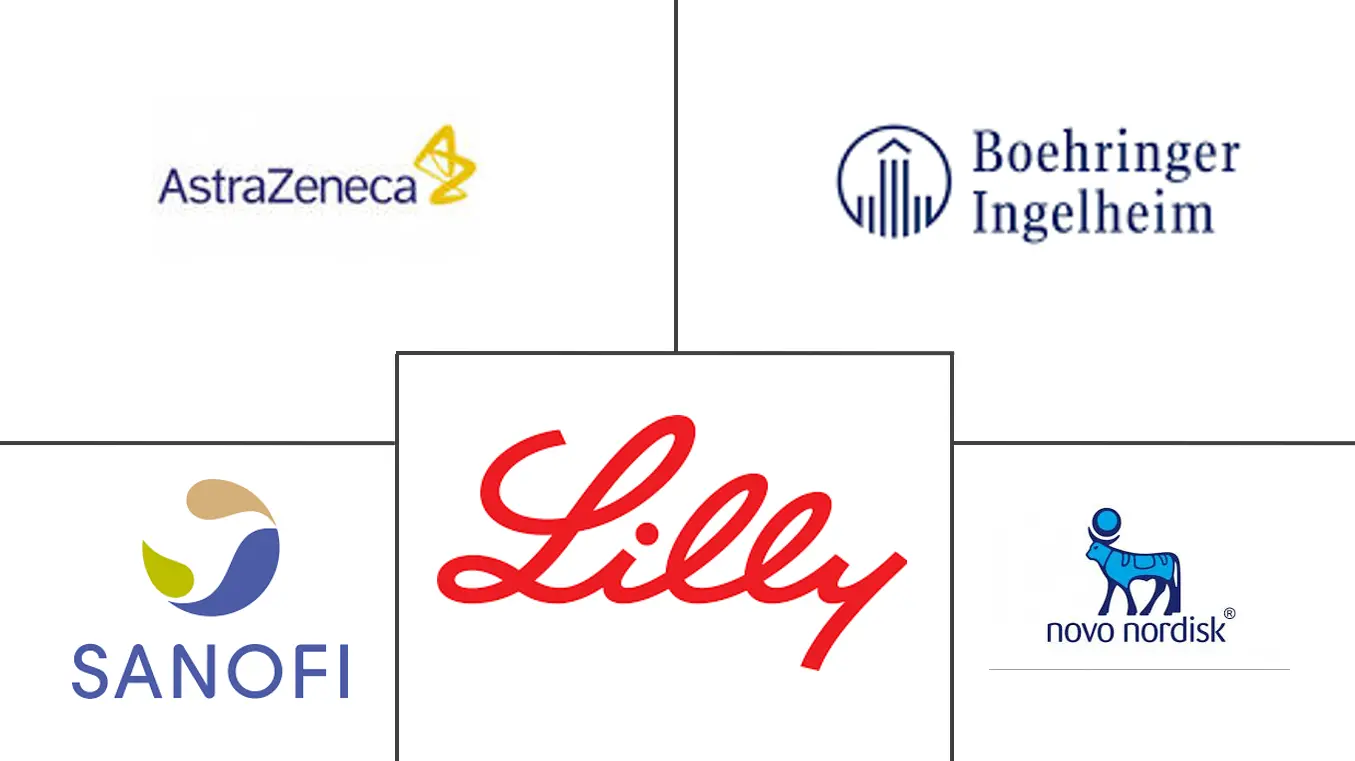New Zealand Diabetes Drugs Market Size and Share
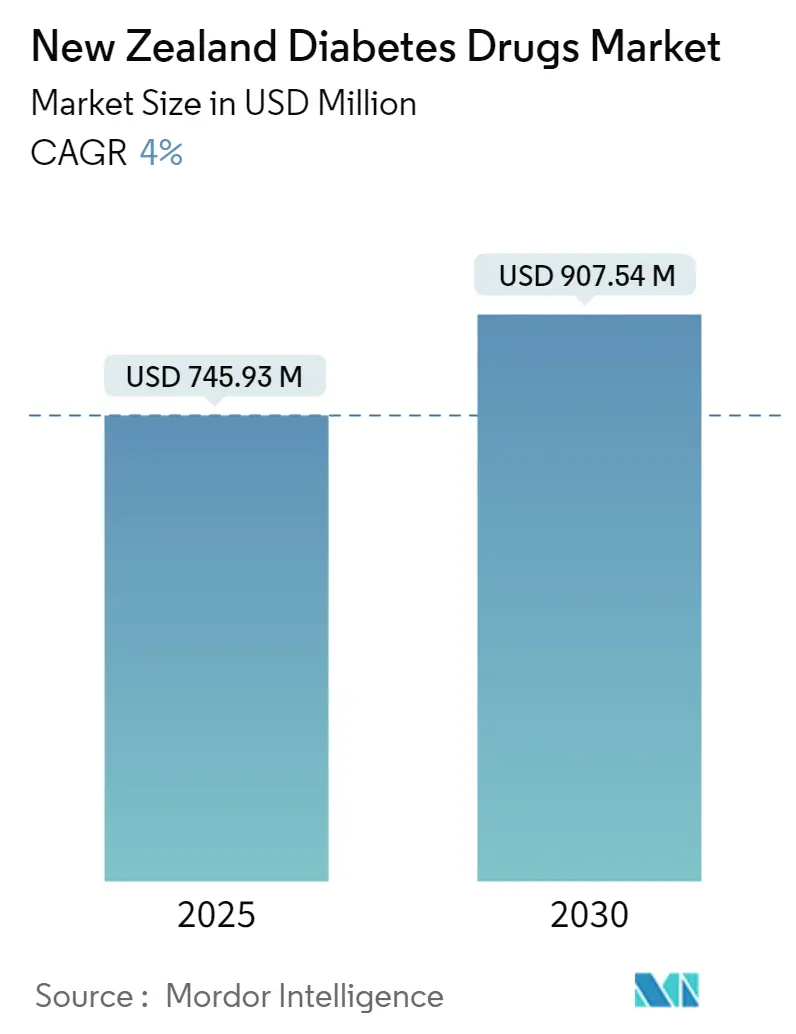
New Zealand Diabetes Drugs Market Analysis by Mordor Intelligence
The New Zealand Diabetes Drugs Market size is estimated at USD 745.93 million in 2025, and is expected to reach USD 907.54 million by 2030, at a CAGR of 4% during the forecast period (2025-2030).
Type 1 diabetes was more likely to occur after being diagnosed with COVID-19. Young pediatric patients and older adult patients with COVID-19 had the highest risk. Patients with type 1 diabetes were more likely to contract the virus and experience life-threatening consequences such as diabetic ketoacidosis. The patients' access to diabetes services and receipt of effective clinical care, including diabetes screening, education, and monitoring of control and complications, was therefore crucial.
An insulin hormone signals the liver, muscle, and fat cells to take up glucose to regulate blood sugar levels. It facilitates cells' uptake of glucose for cellular energy utilization. When the pancreas fails to produce enough insulin to meet the body's needs, type 1 diabetes develops. The management of type 1 diabetes is intricate and extremely customized. Synthetic insulin is required to regulate blood sugar levels in people with Type 1 diabetes every day or several times during the day.
The New Zealand PHARMAC staff is aware of the need for healthcare providers to receive education to use these treatments. The New Zealand Society for the Study of Diabetes (NZSSD) and the Ministry of Health are actively updating the type 2 diabetes recommendations, and PHARMAC staff is aware of this. These revisions will help provide clear guidance on when these medications should be used in therapy. PHARMAC has already started providing the tools and resources that it has been working to develop to support the use of this and other medications for type 2 diabetes. The main goal of these resources will be to support equitable access to these and other treatments.
New Zealand Diabetes Drugs Market Trends and Insights
Rising diabetes prevalence
Individuals with the condition have difficulty controlling their blood sugar levels, either due to their bodies not producing enough insulin or their cells developing a resistance to insulin, a hormone produced by the pancreas that aids in the body's processing of sugars. If a person with diabetes does not manage their blood sugar levels, it can be fatal and also result in other health problems, such as kidney failure, heart disease, strokes, and blindness. The Ministry of Health estimates that approximately 250,000 New Zealanders (mainly type 2), more likely to be Mori, Pacific Islanders, and South Asians, have been diagnosed with diabetes. Also, the prevalence of the illness is rising.
Diabetes drugs aid the body's production of more insulin. They have also been in use for a time, much like metformin. Sulfonylureas are somewhat more likely to cause hypoglycemic episodes than metformin. As the treatment first begins, some patients also put on weight. Sulfonylureas may cause allergic responses in certain people.
Owing to the rising prevalence of diabetes and the factors above, it is likely that the market will continue to grow.
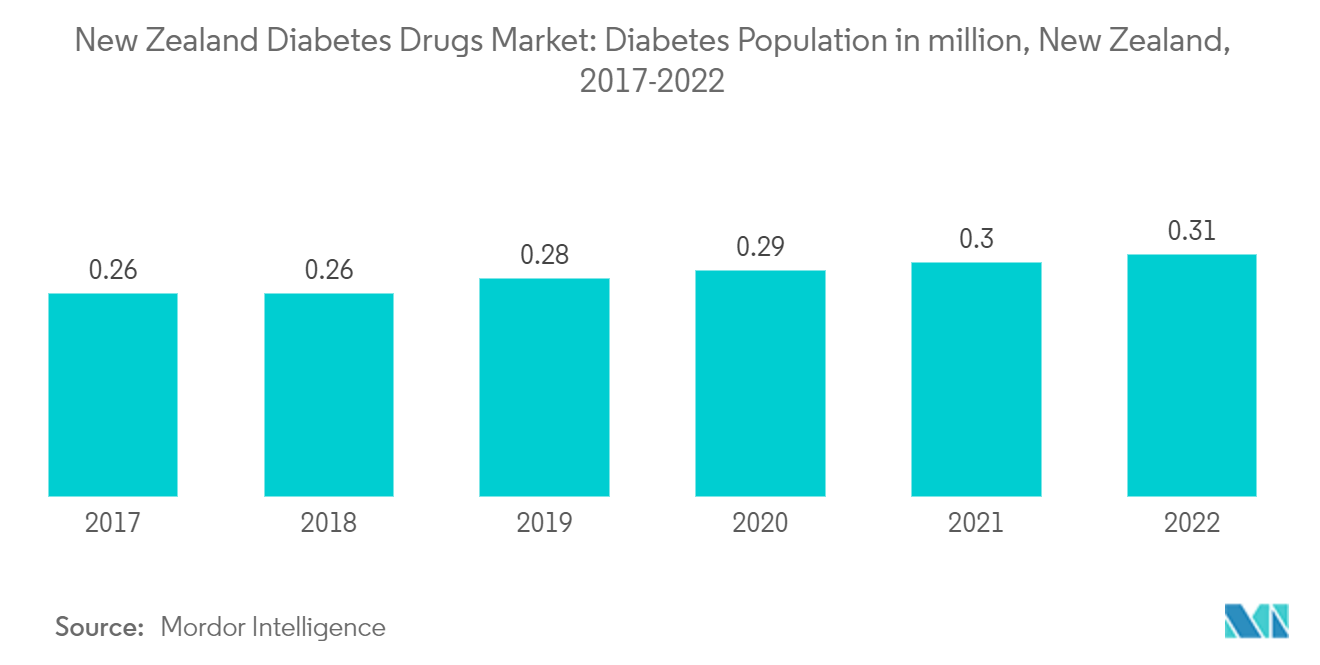
Insulin Drugs segment Expected to Witness Highest Growth Rate Over the Forecast Period
Insulin Drugs are expected to grow with a CAGR of more than 4% in the market during the forecast period.
The New Zealand Society for the Study of Diabetes (NZSSD), with support from the Ministry of Health, recently released type 2 diabetes management guidelines, which state that while the Special Authority criteria for empagliflozin and dulaglutide ensure access for those at high risk of cardiovascular and renal disease, the funding restriction is not entirely consistent with best practice. Departments within public hospitals provide free care for any complications or issues related to diabetes (for citizens and residents of New Zealand). The available therapeutic options are on par with those in other developed nations besides New Zealand.
There is a government organization in New Zealand called Pharmac that controls the kinds of diabetic drugs that are sold there. As a result, several medications that are sold abroad are unavailable in New Zealand. Yet, a drug that is nearly identical to it is frequently on the market. In New Zealand, you can get insulin and almost all diabetes medications. The two major insulin manufacturers, Novo Nordisk and Eli Lilly offer a sizable selection of their products in New Zealand. Eli Lilly Humalog and Novo Nordisk NovoRapid are two very short-acting insulin analogs that are commonly accessible. The price of medications is the same throughout New Zealand. If you live in New Zealand, each prescription item will cost you $5.00.
The roll-out of many new products, increasing international research collaborations in technology advancement, and increasing awareness about diabetes among people are expected to boost the market.
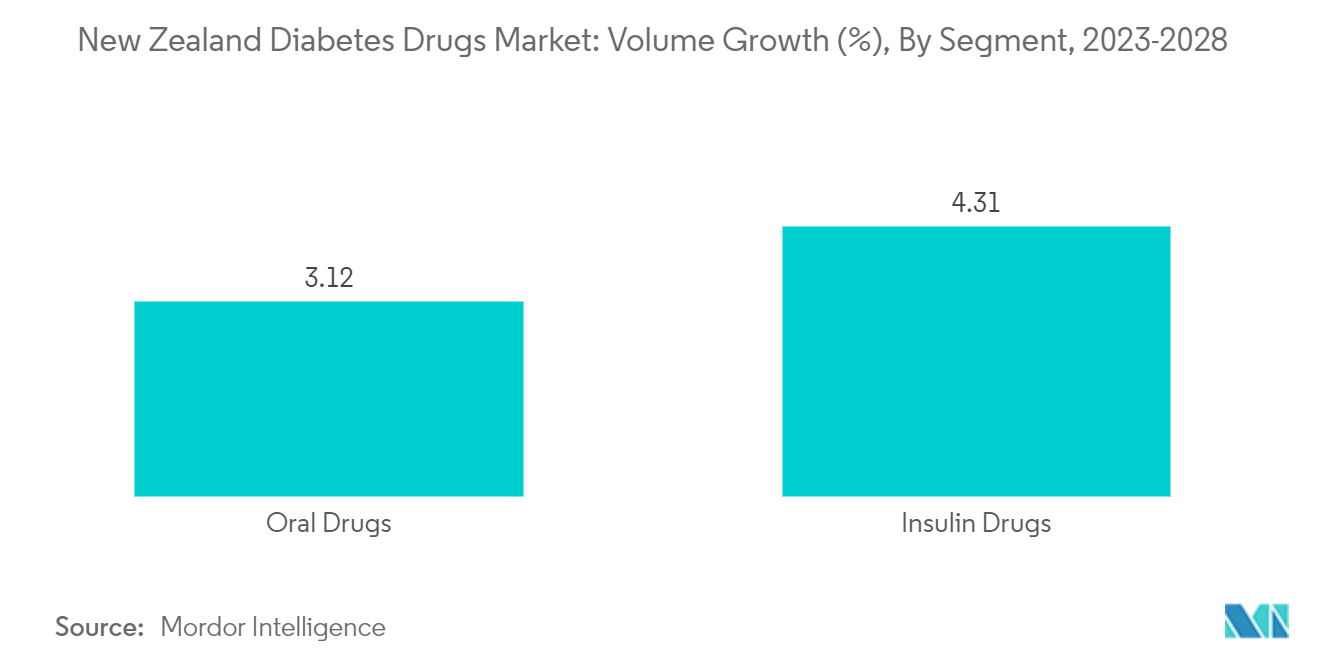
Competitive Landscape
The New Zealand Diabetes Drugs Market is moderately consolidated with few significant and generic players. The major players are working on innovations in insulin drugs and devices which is evident from the companies spending on research and developments to strengthen their market presence.
New Zealand Diabetes Drugs Industry Leaders
-
Sanofi
-
Eli Lily
-
Novo Nordisk
-
Boehringer Ingelheim
-
Astrazeneca
- *Disclaimer: Major Players sorted in no particular order
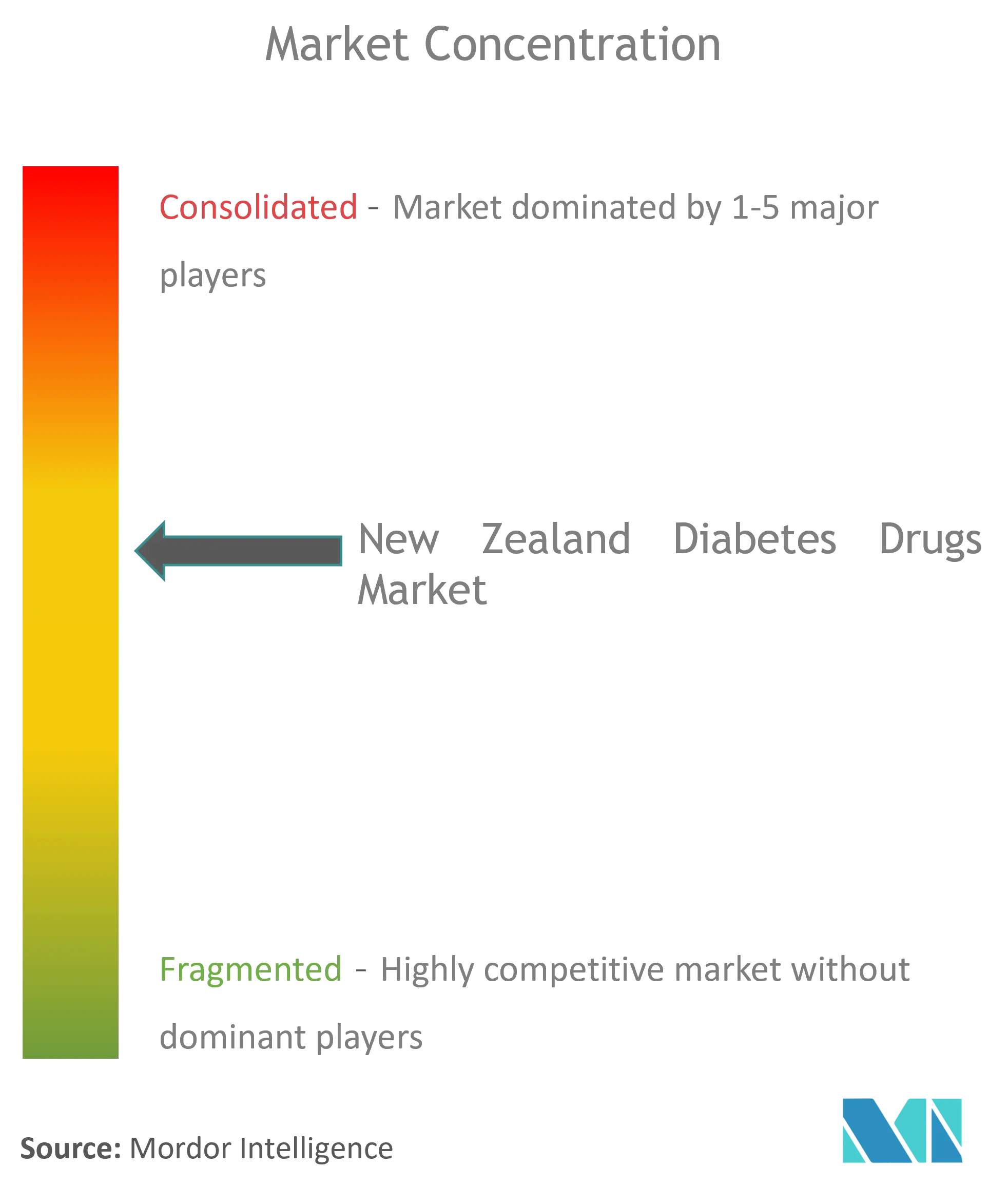
Recent Industry Developments
August 2021: Pharmac approved funding for Empagliflozin and Dulaglutide for 53,000 patients with the disease who met certain criteria in December. But the funding for Dulaglutide depended on Medsafe approving the use of the drug.
August 2021: Pharmac launched the 'You Are a Priority' campaign to raise awareness amongst Māori and Pacific people about their ability to access Empagliflozin and Dulaglutide.
New Zealand Diabetes Drugs Market Report Scope
The aim of the treatment is to prevent diabetes from leading to other health problems. Constantly high blood sugar levels can cause damage to blood vessels and nerves. The New Zealand Diabetes Drugs Market is set to witness a CAGR of more than 4% during the forecast period. New Zealand Diabetes Drugs Market is segmented into drugs (Basal or Long-acting Insulins, Bolus or Fast-acting Insulins, Traditional Human Insulins, Combination Insulins, Biosimilar Insulins, and Amylin Analogues), and the report offers value (in USD million) and volume (in million mL) for drugs for the above segments.
| Biguanides | Metformin |
| Alpha-Glucosidase Inhibitors | Alpha-Glucosidase Inhibitors |
| Dopamine D2 receptor agonist | Bromocriptin |
| SGLT-2 inhibitors | Invokana (Canagliflozin) |
| Jardiance (Empagliflozin) | |
| Farxiga/Forxiga (Dapagliflozin) | |
| Suglat (Ipragliflozin) | |
| DPP-4 inhibitors | Onglyza (Saxagliptin) |
| Tradjenta (Linagliptin) | |
| Vipidia/Nesina(Alogliptin) | |
| Galvus (Vildagliptin) | |
| Sulfonylureas | Sulfonylureas |
| Meglitinides | Meglitinides |
| Basal or Long Acting Insulins | Lantus (Insulin Glargine) |
| Levemir (Insulin Detemir) | |
| Toujeo (Insulin Glargine) | |
| Tresiba (Insulin Degludec) | |
| Basaglar (Insulin Glargine) | |
| Bolus or Fast Acting Insulins | NovoRapid/Novolog (Insulin Aspart) |
| Humalog (Insulin Lispro) | |
| Apidra (Insulin Glulisine) | |
| Traditional Human Insulins | Novolin/Actrapid/Insulatard |
| Humulin | |
| Insuman | |
| Biosimilar Insulins | Insulin Glargine Biosimilars |
| Human Insulin Biosimilars |
| Insulin combinations | NovoMix (Biphasic Insulin Aspart) |
| Ryzodeg (Insulin Degludec and Insulin Aspart) | |
| Xultophy (Insulin Degludec and Liraglutide) | |
| Oral Combinations | Janumet (Sitagliptin and Metformin) |
| GLP-1 receptor agonists | Victoza (Liraglutide) |
| Byetta (Exenatide) | |
| Bydureon (Exenatide) | |
| Trulicity (Dulaglutide) | |
| Lyxumia (Lixisenatide) | |
| Amylin Analogue | Symlin (Pramlintide) |
| Oral Anti-diabetic drugs (Value and Volume, 2017 - 2028) | Biguanides | Metformin |
| Alpha-Glucosidase Inhibitors | Alpha-Glucosidase Inhibitors | |
| Dopamine D2 receptor agonist | Bromocriptin | |
| SGLT-2 inhibitors | Invokana (Canagliflozin) | |
| Jardiance (Empagliflozin) | ||
| Farxiga/Forxiga (Dapagliflozin) | ||
| Suglat (Ipragliflozin) | ||
| DPP-4 inhibitors | Onglyza (Saxagliptin) | |
| Tradjenta (Linagliptin) | ||
| Vipidia/Nesina(Alogliptin) | ||
| Galvus (Vildagliptin) | ||
| Sulfonylureas | Sulfonylureas | |
| Meglitinides | Meglitinides | |
| Insulins (Value and Volume, 2017 - 2028) | Basal or Long Acting Insulins | Lantus (Insulin Glargine) |
| Levemir (Insulin Detemir) | ||
| Toujeo (Insulin Glargine) | ||
| Tresiba (Insulin Degludec) | ||
| Basaglar (Insulin Glargine) | ||
| Bolus or Fast Acting Insulins | NovoRapid/Novolog (Insulin Aspart) | |
| Humalog (Insulin Lispro) | ||
| Apidra (Insulin Glulisine) | ||
| Traditional Human Insulins | Novolin/Actrapid/Insulatard | |
| Humulin | ||
| Insuman | ||
| Biosimilar Insulins | Insulin Glargine Biosimilars | |
| Human Insulin Biosimilars | ||
| Combination drugs (Value and Volume, 2017 - 2028) | Insulin combinations | NovoMix (Biphasic Insulin Aspart) |
| Ryzodeg (Insulin Degludec and Insulin Aspart) | ||
| Xultophy (Insulin Degludec and Liraglutide) | ||
| Oral Combinations | Janumet (Sitagliptin and Metformin) | |
| Non-Insulin Injectable drugs (Value and Volume, 2017 - 2028) | GLP-1 receptor agonists | Victoza (Liraglutide) |
| Byetta (Exenatide) | ||
| Bydureon (Exenatide) | ||
| Trulicity (Dulaglutide) | ||
| Lyxumia (Lixisenatide) | ||
| Amylin Analogue | Symlin (Pramlintide) | |
Key Questions Answered in the Report
How big is the New Zealand Diabetes Drugs Market?
The New Zealand Diabetes Drugs Market size is expected to reach USD 745.93 million in 2025 and grow at a CAGR of 4% to reach USD 907.54 million by 2030.
What is the current New Zealand Diabetes Drugs Market size?
In 2025, the New Zealand Diabetes Drugs Market size is expected to reach USD 745.93 million.
Who are the key players in New Zealand Diabetes Drugs Market?
Sanofi, Eli Lily, Novo Nordisk, Boehringer Ingelheim and Astrazeneca are the major companies operating in the New Zealand Diabetes Drugs Market.
What years does this New Zealand Diabetes Drugs Market cover, and what was the market size in 2024?
In 2024, the New Zealand Diabetes Drugs Market size was estimated at USD 716.09 million. The report covers the New Zealand Diabetes Drugs Market historical market size for years: 2019, 2020, 2021, 2022, 2023 and 2024. The report also forecasts the New Zealand Diabetes Drugs Market size for years: 2025, 2026, 2027, 2028, 2029 and 2030.
Page last updated on:
New Zealand Diabetes Drugs Market Report
Statistics for the 2025 New Zealand Diabetes Drugs market share, size and revenue growth rate, created by Mordor Intelligence™ Industry Reports. New Zealand Diabetes Drugs analysis includes a market forecast outlook for 2025 to 2030 and historical overview. Get a sample of this industry analysis as a free report PDF download.
